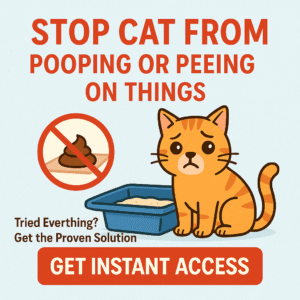Has your kitty just had a tooth pulled and you’re wondering how to ensure a smooth recovery? You’re not alone—this is a crucial time for healing. In this guide, you’ll find everything you need: care routines, gentle feeding tips, pain management, signs to watch, and how the Cat Spray No More ebook supports you through every step.
Introduction
Tooth extractions in cats—whether due to dental disease, pain, or injury—require thoughtful care in the days that follow. Your cat’s mouth needs time to heal, and you need a clear plan to keep them comfortable and infection-free. With over 1,400 words full of actionable advice, this guide helps you navigate recovery, from day zero through follow-up. And with the additional health routines featured in Cat Spray No More, you’ll find deeper support for hygiene, stress reduction, and long-term wellness.
Why Aftercare Matters
- Promotes fast healing: Proper care reduces inflammation and protects the extraction site.
- Prevents complications: Infections, dry socket, or post-op bleeding can result from poor aftercare.
- Ensures comfort: Managing pain and diet encourages drinking and eating—key to recovery.
What to Expect in the First 24 Hours
The first day is critical. Your cat may experience minor bleeding, swelling, or discomfort. They might not eat or be quieter than usual. It’s normal—but also delicate. Here’s what to do:
Home Setup
- Quiet, warm, familiar environment free from stressors.
- Soft bedding close to you but away from other pets.
- Clean water bowl at ground level.
- Litter box nearby—your cat shouldn’t have to travel far.
Pain Management
- Administer any vet-prescribed medication exactly as directed—timing is key.
- Never give human pain relievers like Tylenol, ibuprofen, or Aspirin—deadly for cats.
- Monitor appetite and activity hourly. If pain seems uncontrolled, alert your vet immediately.
Monitoring the Extraction Site
- Light bleeding or clear saliva is normal; clotting begins within hours.
- Avoid poking or rinsing the site.
- Look for swelling or persistent redness—but minor inflammation is common.
Feeding: What and When
Day 1–3 (Soft & Mild)
- Offer lukewarm wet food—soft and easy to lap up.
- Moisten kibbles with warm water for comfort if dry food is preferred later.
- Hand-feeding may help initially; encourage fluid intake.
Day 4–7 (Transition Phase)
- Gradually reintroduce dry food—softened with water or broth.
- Monitor tolerance—chewing might still be uncomfortable.
After Day 7 (Back to Normal)
- Your vet likely advises full diet return—monitor appetite and ease back into regular feeding.
- Keep dental care consistent to prevent future dental issues.
Tip: The Cat Spray No More guide includes soothing meal ideas and hydration support strategies—helping your cat heal comfortably and stay nourished.
Comfort & Environment Tips
- Keep it calm: No loud noises or aggressive pets nearby.
- Use soft bedding: Minimize movement and pressure.
- Limit activity: Prevent jumping, playing, or chasing during the first week.
- Encourage rest: Sit beside them calmly so they feel secure.
- Provide warmth: A heating pad set on low (wrapped in a towel) can comfort—but never overheat.
Maintaining Oral Hygiene Post-Extraction
- Don’t brush near the extraction site until fully healed. Instead, follow vet advice—maybe rinse with warm water or a vet-provided mouthwash.
- After healing: Use pet-safe dental products (toothpaste, pads, or gently designed toothbrushes).
- Check gums weekly: Watch for swelling, bad odor, redness, or food getting trapped.
- Follow-up vet appointment: Usually scheduled at 7–14 days to confirm full recovery.
Signs of Problems: Act Fast
- Bleeding beyond 48 hours.
- Swelling that worsens after day 3.
- Pus, foul odor, lethargy, loss of appetite.
- Fever or refusal to eat or drink.
If any of these signs appear, call your vet right away—complications can escalate quickly.
Pain & Medication Monitoring
- Track doses: Use a journal—often provided in the Cat Spray No More ebook—to avoid missed or duplicate doses.
- Watch for side effects: Vomiting, diarrhea, inappetence or sedating meds might require dosage adjustment.
- Call vet if there’s a reaction: No guessing—any unusual behaviors need evaluation.
Boosting Healing Naturally
- Omega‑3 fatty acids: Reduce inflammation—ask vet for safe options.
- Protein-rich meals: Support tissue repair—soft turkey or chicken are good choices.
- Probiotics: If your cat is on antibiotics, add a feline-specific probiotic (vet suggested).
- Stress reduction: A stress-free environment boosts immunity—use pheromone diffusers, soft music, calm presence.
Long-Term Oral Health Planning
- Regular dental check-ups: Every 6–12 months to monitor for new issues.
- Maintain dental hygiene: Start brushing gradually after healing or use dental treats and pads.
- Detect early signs: Bad breath, drooling, pawing mouth, or difficulty eating suggest a dental problem.
- Prevent disease recurrence: Balanced diet, oral hygiene, and vet guidance as emphasized in Cat Spray No More.
How Cat Spray No More Supports Tooth Extraction Aftercare
- Structured healing checklists: Day-by-day step tracking—from pain relief to appetite check.
- Hydration & feeding plans: Ensures your cat eats enough and stays hydrated through recovery.
- Behavior trackers: Notes mood, chewing habits, sleep, and litter use to catch complications early.
- Oral hygiene routines: Post-recovery steps for long-term dental wellness and fresh breath.
Need reliable aftercare—and beyond? Download Cat Spray No More today. It’s created to guide you through every stage—whether tackling oral recovery, house cleaning, stress triggers, or general wellness. You’ll feel prepared, confident, and supported.
Real Cat Owner Experience
“My senior cat had two teeth extracted and nearly stopped eating. The ebook’s gentle feeding and monitoring plan kept her comfortable. She healed fully in a week, no vet emergency, just steady recovery.”
Conclusion
Tooth extraction is a pivotal moment in your cat’s health journey—but with clear aftercare, most cats recover smoothly. Provide quiet comfort, soft food, pain meds, and careful monitoring. Watch for complications, maintain oral hygiene after healing, and schedule regular dental checkups.
Want confidence, checklists, and ongoing support? Cat Spray No More offers all that—and more. Download your guide now to make sure your cat not only recovers well but thrives for years to come.
